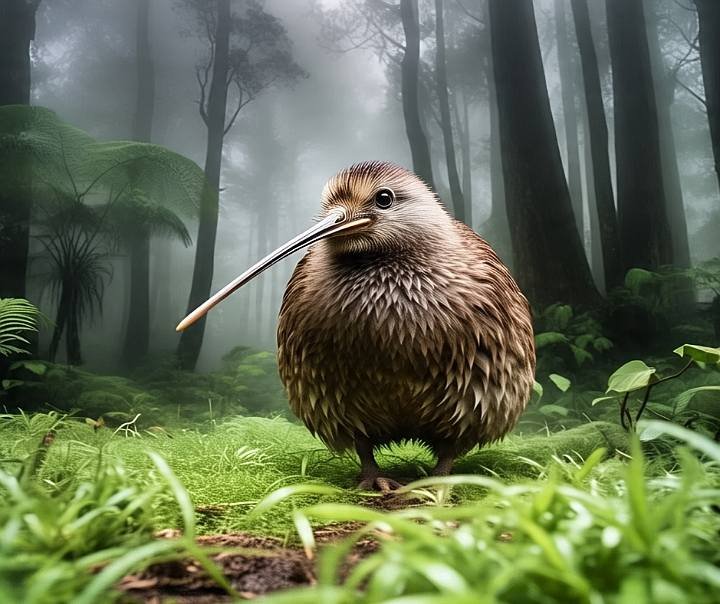The Eagle : The Majestic King of the Skies – A Detailed Exploration
Hello, friends! Today, we’re diving into the fascinating world of one of nature’s most awe-inspiring creatures—the eagle. Known as the king of the skies, this magnificent bird is a symbol of power, grace, and freedom. So, get ready, because we are going to tell you everything about eagles in detail, from their qualities to their importance.
1. What is an Eagle?
An eagle is a large, powerful bird of prey belonging to the Accipitridae family. Renowned for their sharp eyesight, strong talons, and incredible flying skills, eagles are among nature’s top hunters. There are around 60 species of eagles worldwide, found across continents like North America, Europe, Asia, Africa, and Australia. In India, you can spot species like the Mountain Hawk-Eagle and the White-bellied Sea Eagle.
Fun Fact: Did you know an eagle’s eyesight is so sharp that it can spot prey from 3-4 kilometers away? Their vision is 8 times better than ours! Learn more: National Audubon Society on Eagle Vision
2. Physical Characteristics of Eagles
Eagles are built for dominance, and their physical features make them stand out. Let’s break them down:

Size and Weight
- Eagles vary in size depending on the species. The smallest, like the South Nicobar Serpent Eagle, weighs around 450 grams, while the largest, like the Harpy Eagle, can weigh up to 9 kilograms.
- Their wingspan ranges from 1.8 meters to 2.5 meters, allowing them to glide effortlessly.
Eyes
- An eagle’s eyes are its superpower. With vision 8 times sharper than humans, they can spot tiny details from miles away.
- Their eyes are positioned on the sides of their head, but they can focus forward using binocular vision, giving them precise depth perception.
Beak and Talons
- Eagles have hooked, razor-sharp beaks designed to tear through flesh.
- Their talons, or claws, are incredibly strong, capable of lifting prey as heavy as a small deer.
Wings
- Eagles have long, broad wings that help them soar for hours without flapping.
- Some species, like the Bald Eagle, can reach speeds of up to 120 km/h during a dive.
3. Eagle Habitats
Eagles are found almost everywhere, but they choose their homes carefully based on food availability and nesting sites.
- Mountains and Forests: The Harpy Eagle thrives in the dense rainforests of South America. Explore more: National Geographic on Harpy Eagles
- Coasts and Rivers: The White-bellied Sea Eagle prefers coastal areas and riverbanks, where fish are plentiful.
- Open Plains and Deserts: The Golden Eagle roams mountainous regions and open plains, hunting small mammals.
Key Note: Eagles are fiercely territorial and often stay in the same area for years if food and safety are abundant.
4. What Do Eagles Eat?
Eagles are carnivores and expert hunters. Their diet depends on their species and habitat.
- Fish: Sea eagles, like the Bald Eagle, primarily feed on fish, diving into water to snatch their prey. More info: All About Birds – Bald Eagle
- Small Mammals: Golden Eagles hunt rabbits, squirrels, and even young deer.
- Snakes and Birds: Serpent Eagles specialize in snakes, while others prey on smaller birds.
- Carrion: Some eagles, like the Andean Condor, also feed on dead animals.
Did You Know?: Eagles can dive from heights of 100-150 meters to catch prey, a move called stooping that showcases their precision.
5. Types of Eagles
With so many eagle species, let’s highlight a few iconic ones:
- Bald Eagle: The national emblem of the USA, known for its white head and tail.
- Golden Eagle: A swift and powerful hunter found in mountainous regions.
- Harpy Eagle: The largest and strongest eagle, native to South American rainforests.
- White-bellied Sea Eagle: Common in India and Southeast Asia, often seen near coasts.
- Mountain Hawk-Eagle: Found in India’s Himalayan regions.
Challenge: Pick one species and research more about it to share with the group next time!
6. Reproduction and Life Cycle
Eagles have a remarkable life cycle. Here’s how it works:
- Breeding: Eagles start breeding around 4-5 years old. They are monogamous, staying with one partner for life.
- Nests: They build large nests, called eyries, high in trees or on cliffs. Some nests are so big they could hold a person!
- Eggs: Female eagles lay 1-3 eggs, which hatch after 35-40 days.
- Raising Chicks: Both parents care for the chicks, who learn to fly within 10-12 weeks.
Fun Fact: Eagles chicks are weak at birth but grow to their parents’ size in just a few months.
7. Cultural and Symbolic Importance
Eagles aren’t just birds; they hold deep meaning in many cultures:
- In India: Known as Garuda in Hinduism, the eagle is Lord Vishnu’s mount, symbolizing power and speed.
- In the USA: The Bald Eagle represents freedom and strength as the national emblem.
- Globally: Ancient civilizations like the Romans and Egyptians saw eagles as symbols of courage, vision, and spirituality.
Discussion Question: Have you seen an eagle in a movie, book, or story? What did it represent?
8. Why Eagles Need Protection
Sadly, many Eagles species are endangered due to various threats:
- Habitat Loss: Deforestation and urbanization are destroying eagle habitats.
- Pollution: Pesticides and plastic pollution poison their food sources.
- Illegal Hunting: Some hunt eagles for their feathers or body parts.
How Can We Help?
- Plant trees to preserve forests.
- Reduce plastic use to keep ecosystems clean.
- Support conservation groups like the World Wildlife Fund (WWF).
9. Conclusion
Friends, we’ve learned so much about eagles today! From their razor-sharp vision to their majestic flight, eagles are truly nature’s masterpieces. They remind us to aim high, stay focused, and soar toward our goals with determination.
If you enjoyed this post, share it with your friends and keep exploring the wonders of this royal predator. Until next time, think big and soar high like an eagle!
